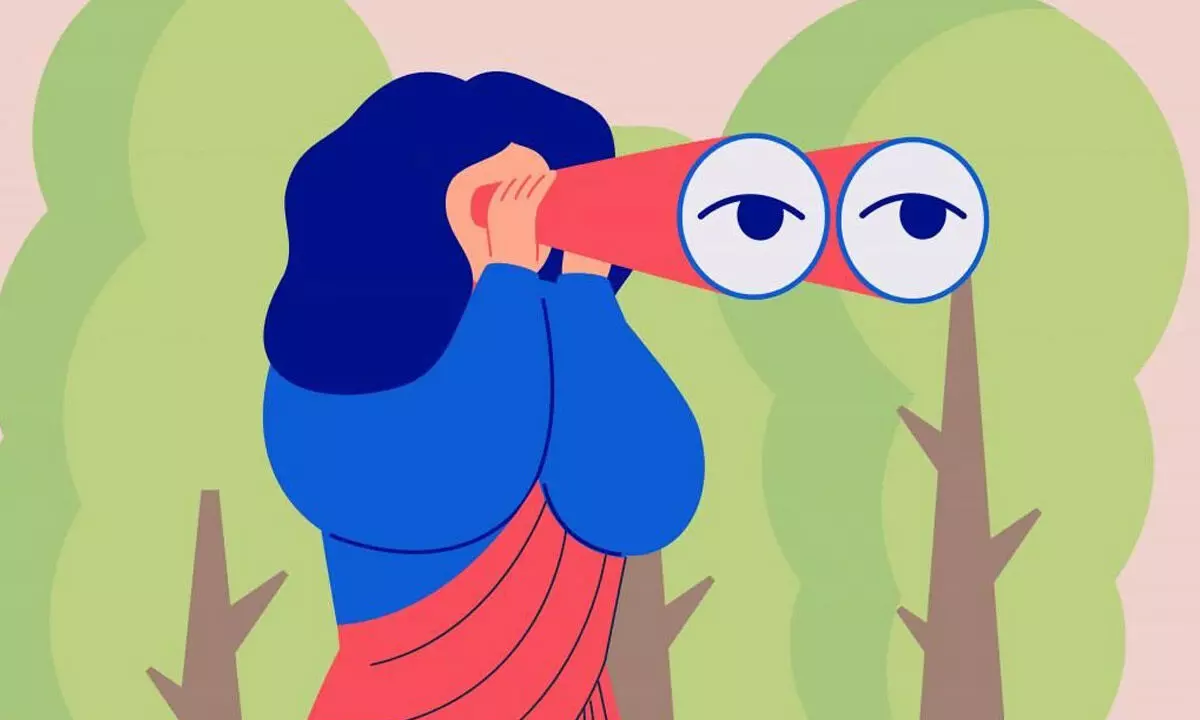Live
- Chanchalguda Jail Officials Say They Haven't Received Bail Papers Yet, Allu Arjun May Stay in Jail Tonight
- BJP leaders present evidence of illegal voters in Delhi, urge EC for swift action
- Exams will not be cancelled: BPSC chairman
- Nagesh Trophy: Karnataka, T.N win in Group A; Bihar, Rajasthan triumph in Group B
- YS Jagan condemns the arrest of Allu Arjun
- Economic and digital corridors to maritime connectivity, India and Italy building vision for future, says Italian Ambassador
- SMAT 2024: Patidar's heroics guide Madhya Pradesh to final after 13 years
- CCPA issues notices to 17 entities for violating direct selling rules
- Mamata expresses satisfaction over speedy conviction in minor girl rape-murder case
- Transparent Survey Process for Indiramma Housing Scheme Directed by District Collector
Just In

Ripe for a green economy
Forests are home, say women of Kodalpali, Sinduria and neighbouring villages in Odisha’s Nayagarh
Why do you patrol the forest near your village every day for the past 30 years? Why does it matter so much?
- I ask a group of women, who look at me with amazement for posing the question.
I am in Kodalpali, a village in Nayagarh district of Odisha, and can see dense, verdant forests for miles. The village is remote and would be classified as poor on economic criteria. It has rudimentary toilets, no piped water supply and the only school has been closed because of a bizarre policy of "rationisation", which means that its less than 25 students now have to trek over 3 kilometres to the next village for education.
But in this village, and the neighbouring ones, women have been zealously protecting their forests for the past three decades. Every day, without fail, a group of four women takes the responsibility to walk and to ensure that nobody fells trees. They fight with intruders; they confiscate their axes and bicycles.
They tell me, without batting an eyelid, that they demand a fine before returning the confiscated goods. The wealth of the forests, as far as the eye can see, tells you that their protection is indeed working.
In this tribal district, there are as many as 217 villages protecting an almost contiguous forest block of 60,000 ha. In 60 of these villages, it is primarily women who form the forest protection committees and take turns to patrol.
Over the years, with the help of Vasundhara — an amazing and committed non-profit working on tribal rights — they have formed a federation of village protection committees at the block and district levels. Here the executives — mostly women — meet every month to sort out inter-village conflicts and other issues.
The octogenarian Shashi Pradhan, or Shashi mausi, as she is known, is the original tree-patrolling party. She tells me that the forests are key to their survival, plain and simple. They provide for all their needs — from firewood to building material to tubers and medicinal plants.
Her younger colleague, Kuntala Nayak, jumps in to say that even during the two horrendous years of COVID-19, they did not need any outside help, and nobody in the village fell ill. "It is our source of life and so we protect it," they say.
Their forest usage rules apply to all — fuelwood is to be collected only on Sundays; green trees are not be felled; no grazing during the monsoon; and collection of minor forest produce, like bamboo, kendu (or tendu leaves used in beedi manufacture), is to be done only by the village households, not by outsiders.
This grand experiment has now entered a new phase. In November 2021, after years of struggle, 24 villages have been granted community forest rights. This is a provision of the Forest Rights Act, 2006, under which villages can get the right to patches of government forests that they were traditionally using, for exclusive use of resources and protection.
As per the data of the Union Ministry of Tribal Affairs, community rights have been granted over some 4.5 million ha of forestland, which would be an impressive 8 per cent of land under the forest cover in government control, except for one crucial catch. The ministry counts in this all community rights, including rights granted to use of waterbodies or minor forest produce and not only forestland rights.
In the current case, the title is for management of forestland, and has been granted jointly to two villages — Kodalpali and Sinduria. The title letter demarcates roughly 300 hectares for management. The villages now have the right to collect, process, use and sell minor forest produce. This also includes the right to value addition, storage and transportation of products within and outside village boundaries.
This is a clear game changer. It would mean that these villages can now move to the next stage of protection, where the green wealth could form the basis of green jobs and a green economy.
The villages now need a plan for the management of this tree-diverse area so that they can profit not just from timber, but also from all the other richness that the forest wealth provides. Experience shows that trees survive when village communities are involved — or given control, as in Kodalpali's case — in forest management. Only then can we move towards a wood-based economy.
In our climate-risked times, this is where the real opportunity is. We know that the world has to increase green cover, which will add to the sequestration of carbon dioxide. Nature-based solutions are the new buzzword.
But as the women of Kodalpali, Sinduria and the neighbouring villages say, the forests are their home and they can build the economy of the future — not just for themselves but for the world. (Writer is Director General of CSE and editor of Down To Earth, an environmentalist who pushes for changes in policies, practices and mindsets; Courtesy: https://www.downtoearth.org.in/)

© 2024 Hyderabad Media House Limited/The Hans India. All rights reserved. Powered by hocalwire.com







